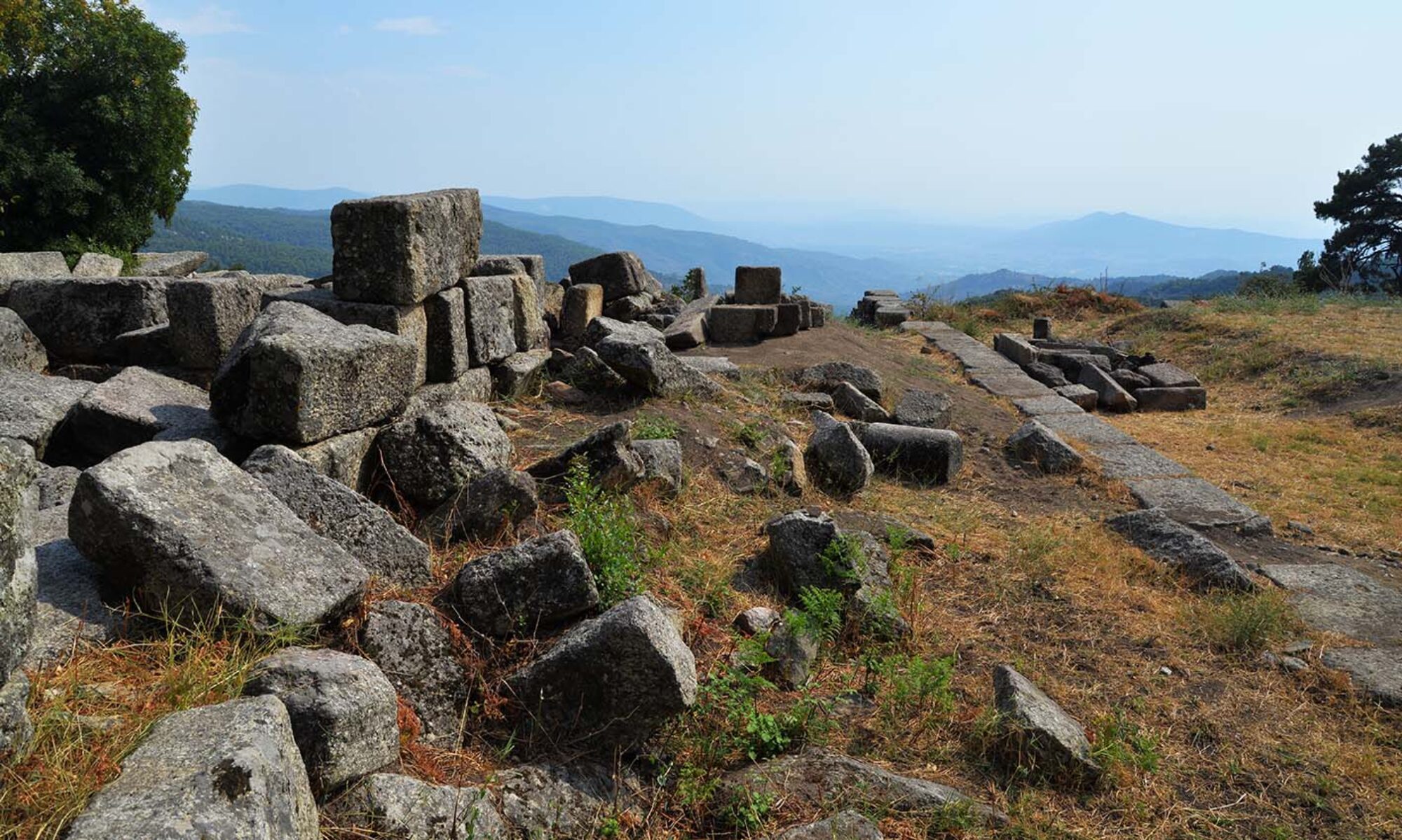Another opportunity to share the project Deep-mapping the Asklepieion presented itself to us in March, when we were invited to give a lecture for the MA course ‘Atelier Living Heritage’, co-taught by by Dr Margriet Hoogvliet and Prof. Dr Rina Knoeff. Among others, the course deals with new ways of presenting historical research, including the possibilities that digital technologies offer.
We decided to focus on the usage of Story Maps, with a lecture and a workshop, in which we explain what a story map is and how you can use it to communicate spatial narratives (see also Digital Storytelling by ESRI), and then let students try it out with some ready-made data.
The theme – Heroes in the Asklepieion
Our focus was on the honorific monuments in the Asklepieion of Pergamon. Alexandra Katevaini created a base story map, Heroes in the Asklepieion, which briefly presents the Asklepieion, then introduces the inscriptions at the sanctuary, focusing on the honorific decrees for the elite, both local and foreign, and focusing on people with strong ties to Rome. Most of these decrees were inscribed on bases that originally included statues of the person being honored, turning the sanctuary into a kind of ‘Hall of Fame’ that immortalized both the individual dignitaries and the relation between Pergamon and Rome.
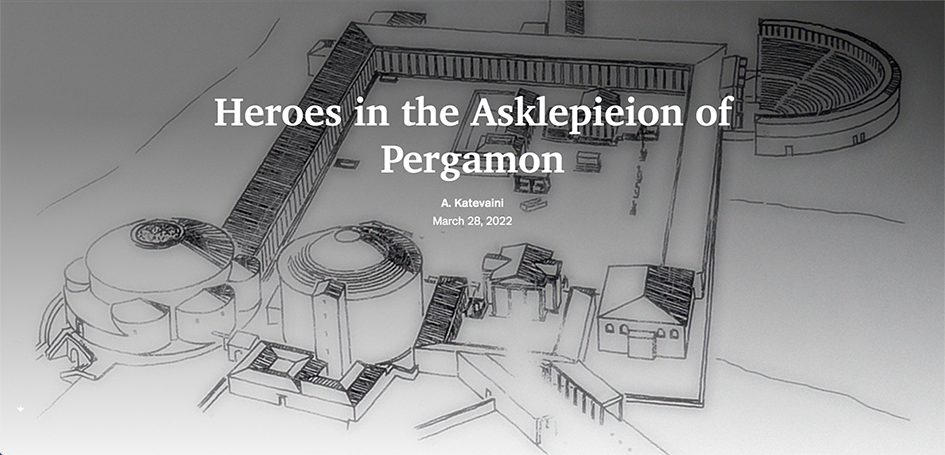
The assignment for the students was to create a story map of one of the ‘heroes’ that could later be linked to the base ‘Heroes’ story map. This hero was Julius Quadratus Bassus, descendant of the Attalids, elite of Pergamon, and member of the Roma Senate, and honored in the Asklepieion via the inscription IvP III 21.
The mini-workshop – building a story map
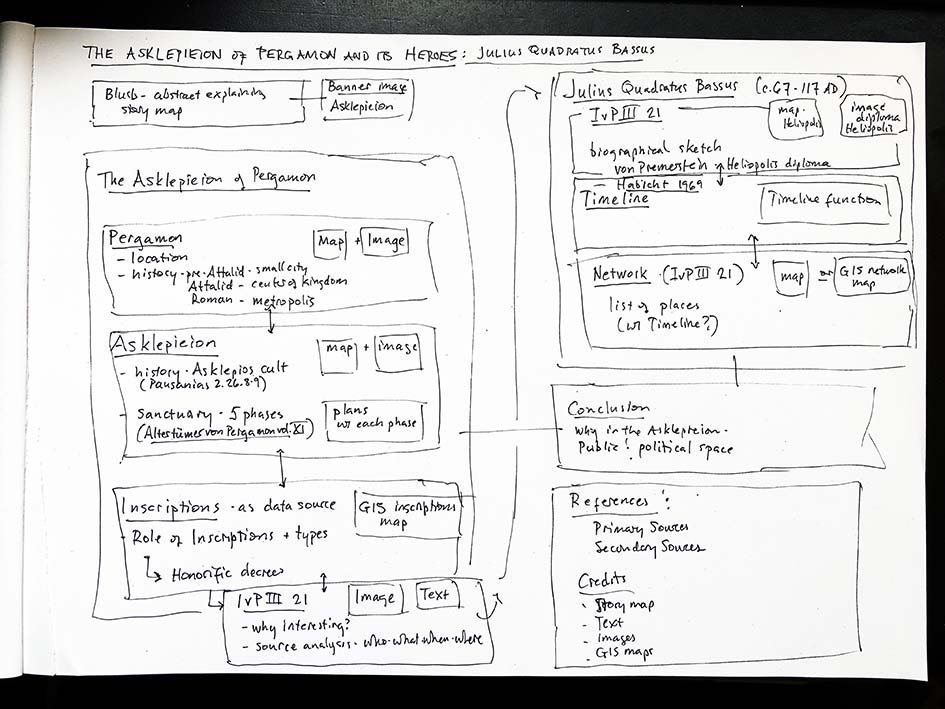
start with a story board
We started with a story board, showing students how it is best to plan their story maps in thematic blocks. Once there is an overall structure and flow to the story, then you can start collecting texts, images and other media, especially maps, that will support the main point of each block. Since we only had an hour for our mini-workshop, we prepared texts and images in advance for the students to use, following step-by-step instructions.
First we drew out the story board, and explained how the different sections would become blocks in the story map. Then Christina began to tell the story of Julius Quadratus Bassus, starting with a brief biography, then his family network, a timeline of his activities, then the inscription, and the mapped network that can be drawn out from this inscription. While Christina was explaining these features, Alexandra created a story map on the spot, that students could follow. It was performance art!
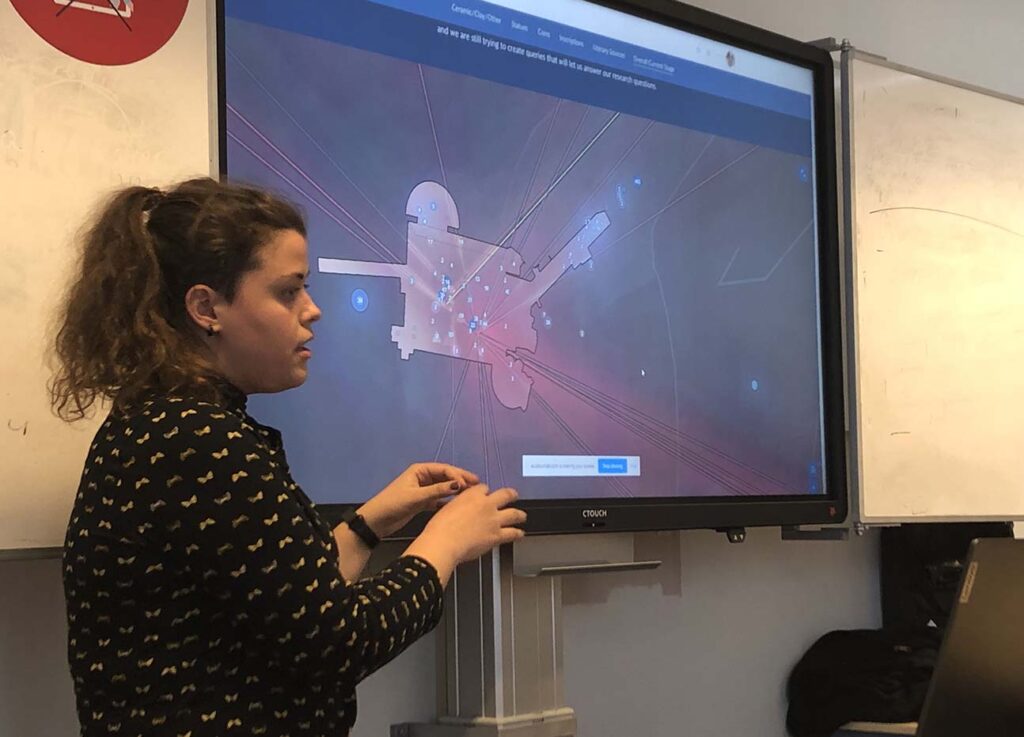

After this it was the students’ turn to make their own story maps, following the same steps with the same data. They could try to recreate what Alexandra made, or try different approaches.
Julius Quadratus Bassus – the myth, the inscription, the network
Alexandra’s resulting story map is shown here and is the first in a series of ‘stories’ that we can derive from the inscriptions themselves.
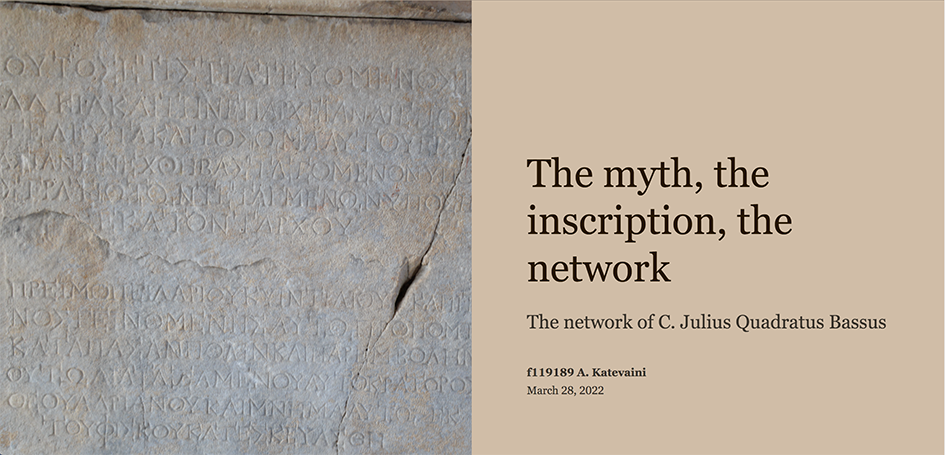
To be continued…
This was a great way to start scratching the surface of the thousands of stories that the Asklepieion has to tell. and a good way of communicating it with students.
This was the first time we ‘performed’ a story map, but Alexandra has taught students in a number of other MA courses how to build a story map as part of their course work:
- MA 2020-21 Power and Cult in the Hellenistic World – story maps were used in lieu of a real excursion to Greece (due to COVID restrictions),
- MA 2021-2022 Sacred Landscapes in the Post-classical world – story maps were used in support of an excursion assignment ;
- MA 2022-2023 Urban Timescapes in the Graeco-Roman world – story maps are the final assignment.
But the Julius Quadratus Bassus story is a great kickstart to the series of stories to come…
A word of thanks
We are grateful to Margriet Hoogvliet for giving us this opportunity to share our work with her students. Margriet is also very keen on deep-mapping herself, and has applied some of the concepts in her own projects, which include Broeders 3D, an interactive encounter with the Brethren of the Common Life in Dordrecht, that she developed with Prof. Dr. Sabrina Corbellini and Dr Pieter Boonstra.
